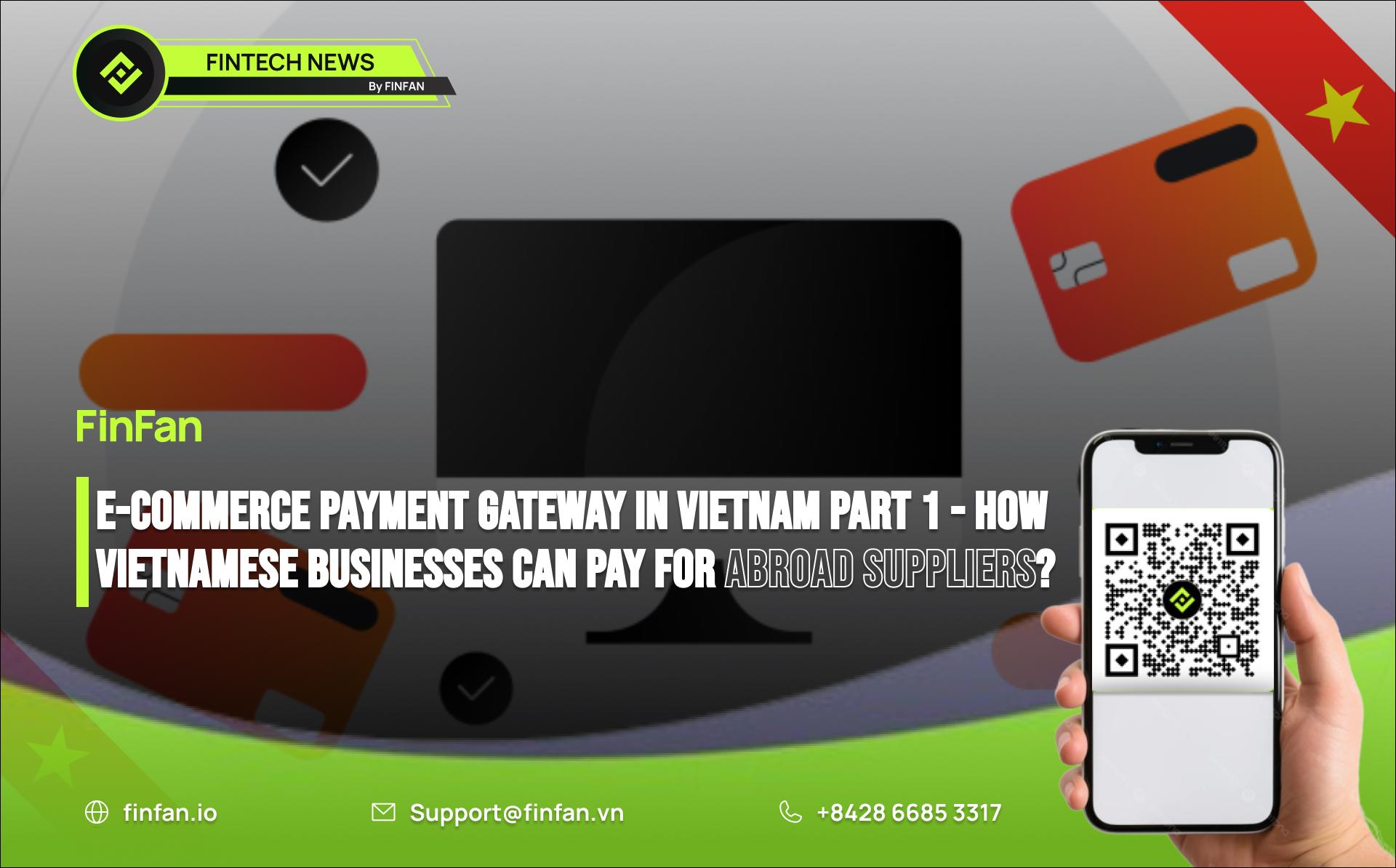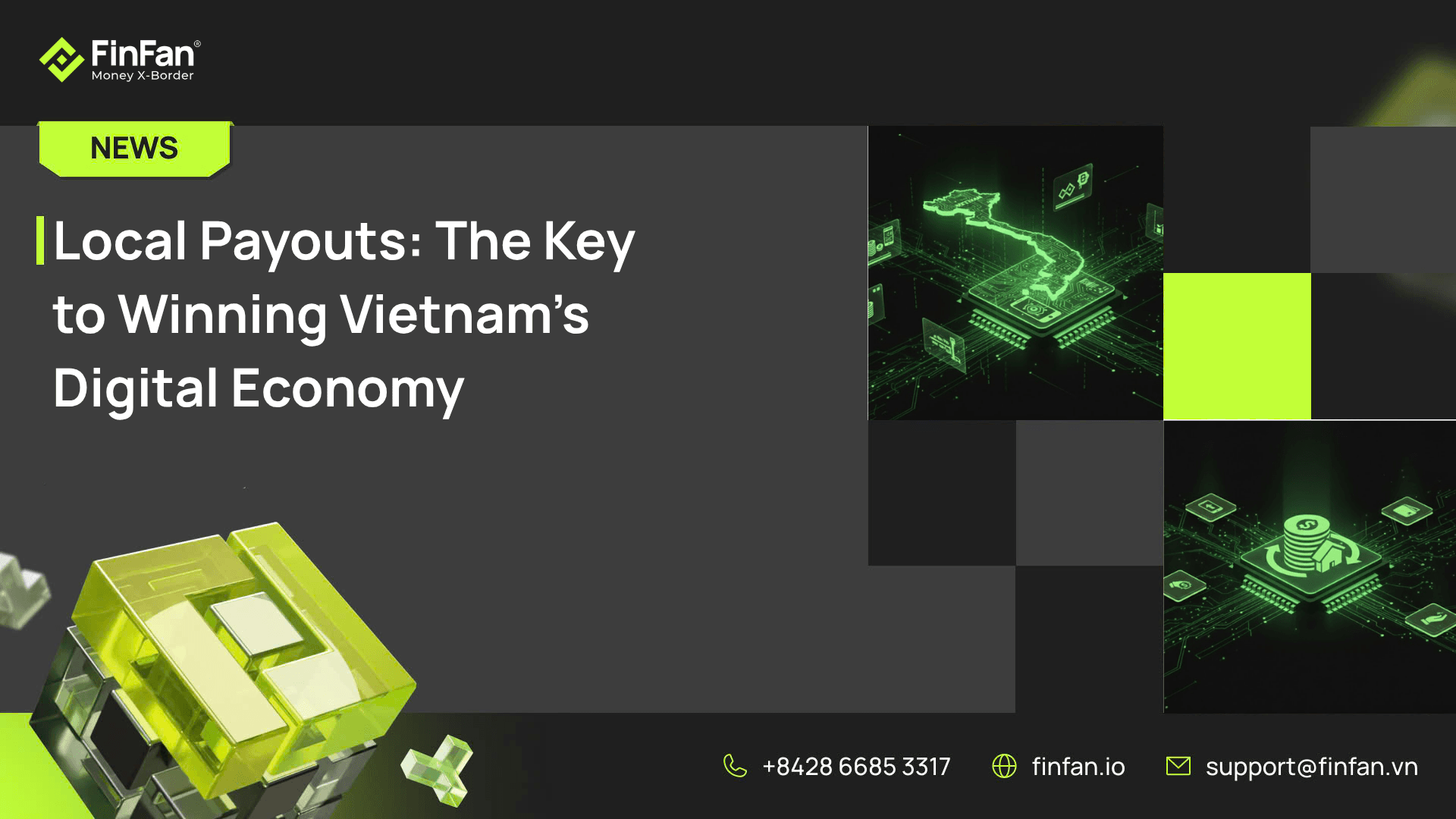E-commerce Payment Gateway in Vietnam Part 1 - How Vietnamese Businesses Can Pay for Abroad Suppliers?

Vietnam's e-commerce landscape has been rapidly growing, driven by a young, tech-savvy population and increased internet penetration.
As Vietnamese businesses expand their reach, purchasing goods and services from abroad has become more common.
However, paying foreign suppliers can be challenging due to the complex regulations and the variety of payment options available.
This blog will explore how Vietnamese businesses can efficiently and securely pay for goods and services from abroad using e-commerce payment gateways.
The Rise of E-commerce in Vietnam
Vietnam's e-commerce market has seen exponential growth, with the total revenue expected to reach over $16 billion by 2025.
This growth has been fueled by the rise of digital payment methods, a shift in consumer behavior, and the government's push for digital transformation.
Vietnam’s businesses increasingly rely on international suppliers for a wide range of products and services, from raw materials to digital tools.
The E-commerce Market from Which Vietnam imports the Most
The value of imported goods through e-commerce into Vietnam is influenced by various factors such as the type of goods, the country of origin, and market demand.
Below is an overview of the import values from major countries through e-commerce:
- China: China is the largest source of imports into Vietnam, particularly for electronics, clothing, and accessories. The import value from China remains consistently high due to its large production capacity and lower manufacturing costs. According to reports, imports from China generally represent over 30% of Vietnam’s total import value.
- South Korea: South Korea is a significant source of imports for Vietnam, especially in cosmetics and high-tech products. The import value from South Korea is substantial, often ranking second only to China, and typically accounts for around 15-20% of the total import value.
- Japan: Japan contributes significantly to Vietnam’s import values with products such as machinery, electronics, and high-quality consumer goods. The import value from Japan generally constitutes about 10-15% of the total import value.
- United States: The United States provides high-value products such as technology and fashion. Imports from the U.S. typically represent approximately 7-10% of the total import value.
- Germany: Germany supplies industrial products and high-tech items, with import values usually accounting for around 3-5% of the total import value.
These figures are approximate and may vary over time due to shifts in consumer preferences, changes in global supply chains, and international trade policies.
For the most accurate and detailed information on import values, consult reports from the General Statistics Office of Vietnam or market research organizations.
The Role of E-commerce Payment Gateways
E-commerce payment gateways are vital in facilitating international transactions. They act as intermediaries between the business and the supplier, ensuring that payments are processed securely and efficiently.
For Vietnamese businesses, selecting the right payment gateway is crucial to maintaining smooth operations and building strong relationships with international suppliers.
Challenges Faced by Vietnamese Businesses
Despite the availability of various payment gateways, Vietnamese businesses face several challenges when paying foreign suppliers:
- Currency Conversion: Most international transactions require currency conversion, which can lead to additional costs and complications. Businesses must be mindful of exchange rates and fees, which can vary depending on the payment gateway used.
- Regulatory Compliance: Vietnam has strict regulations regarding foreign exchange and cross-border payments. Businesses must ensure they comply with these regulations to avoid legal issues and financial penalties.
- Payment Security: Ensuring the security of international transactions is paramount. Vietnamese businesses need to choose payment gateways that offer robust security features to protect against fraud and cyber threats.
FinFan's Insight: How to Overcome Challenges?
Currency Conversion Problem
According to FinFan, businesses should choose the payment gateway that accept their multi-currency account payment method like a virtual credit/debit card, or has an option to support timely currency conversion.
This is because the demand for cross-border payments to suppliers is substantial and frequent, and sometimes timing is critical.
However, if the payment gateway does not support timely currency conversion, the payment process may take longer, and goods may arrive later.
This could lead to missed competitive opportunities in the market, especially with trending and popular products.
Another scenario is when the payment gateway does not accept their virtual card; they will have to use an intermediary to convert Vietnamese Dong to the supplier's local currency.
This results in higher costs due to currency conversion fees and additional charges from the third-party service.
What are multicurrency accounts? And why are they important for businesses? Read here to find out the answer.
Read more about Muti-Currency Accounts:
. Top 5 Use Cases of Multi-Currency Accounts – The Fifth really makes You Surprising
Regulatory Compliance Problem
Businesses should choose payment gateways that are licensed in the Vietnamese market for both cross-border payment inbound and outbound from Vietnam solutions to ensure proper collaboration.
Popular E-commerce Payment Gateways in Vietnam
Several payment gateways are popular among Vietnamese businesses for making payments to foreign suppliers. These gateways offer various features, including multi-currency support, competitive exchange rates, and strong security protocols.
Read more:
. Top 5 International Payment Gateway for E-commerce (from 5th to 1st Famous Payment Gateway)
Conclusion Regarding Vietnamese Businesses choose the Payment Gateway for purchasing suppliers
As Vietnam's e-commerce market continues to grow, businesses are increasingly looking to international suppliers to meet their needs.
By choosing the right e-commerce payment gateway and following best practices, Vietnamese businesses can navigate the complexities of international payments, ensuring smooth and secure transactions with their foreign partners.
With the right approach, these businesses can thrive in the global marketplace, leveraging the power of digital payments to expand their reach and enhance their operations.
This article was curated and authored by FinFan's market research and development team, alongside our marketing department.
About FinFan
FinFan is a cross-border embedded financial services company that focuses on mass disbursement, fund collection, card processing, IBAN, and digital APMs solutions, which can provide valuable input and integration on and for the same.
FinFan is already integrated with almost the world's well-known MTOs, PSPs, switch, and core fintech platforms such as Money Gram, Thunes, Qiwi, Remitly, World Remit, Bancore, PaySend, Terrapay, Ria Money Transfer (Euronet), Dlocal, Ripple, TripleA, FoMo Pay, Wings, etc.
For more information, please get in touch with us through:
🌐https://finfan.io
📞(+84) 2866 85 3317
✉ support@finfan.vn
LinkedIn: FinFan





